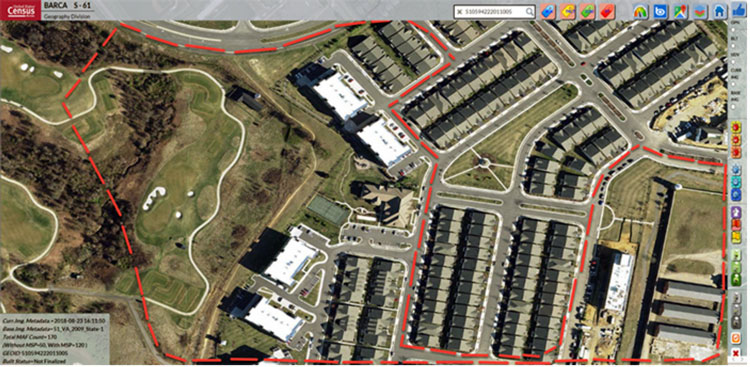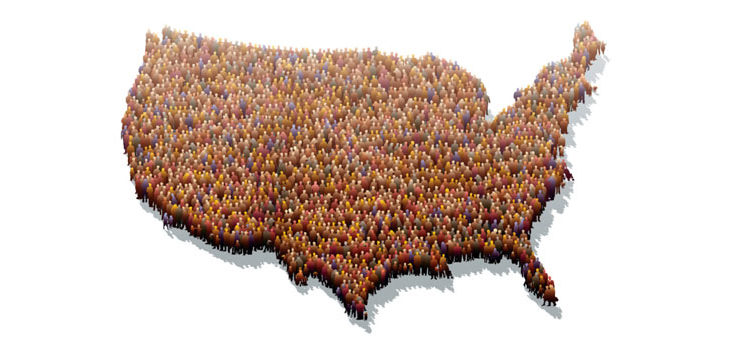By Jonathan Benett
Once a decade, the U.S. Government undertakes one of its greatest challenges. It involves the entire population, and chances are, you took part in it in 2010.
It dates back to 1790 when Thomas Jefferson oversaw it. It’s part of the U.S. Constitution, mandated to happen every 10 years. Yet the majority of Americans don’t really understand why it’s done and how it affects their daily lives.
If you hadn’t guessed, I’m talking about the U.S. Census.
We recently invited Stephen Buckner, Assistant Director for Communications at the U.S. Census Bureau, to speak at our Adobe Digital Government Symposium. He spoke about the new digitized 2020 Census, how they created their digital transformation roadmap and the principles they’ve applied to make it easier for the public to respond.
He said the most common question the Census Bureau gets is:
“What is the Census?”
This got me thinking. Many people don’t understand the significance of the census, and the massive impact it has on local and national politics, congressional seats, economic forecasting and planning, funding for education systems and hospitals, social security and Medicare, new business development, and so much more.
Buckner said it best when he told the audience it’s about “power, money and fair representation in government.” Like voting, it’s having every voice heard. And that’s critical to representative democracy.
The data itself is collected once a decade and then used by organizations, businesses, and government agencies — influencing billions of dollars-worth of budgeting decisions — and impacting the public every day. So, it’s hugely important we get it right by counting everyone.
How do you reduce barriers to participation? How do you make it easy and available anytime, anywhere and on any device? As Buckner stated, “No experience in today’s world can be about a desktop view. The majority of people access information on mobile devices so we had to take a mobile-first approach. How do you create personal experiences when you are trying to reach everyone in this country? How in the world do you create a unique experience for the diversity that is the United States?”
Not only do we face the challenge of accurately tabulating the entire population in 2020 — but also communicating the Census Bureau’s wider mission and getting everyone behind it: to ensure that every voice is heard to shape the future.
Why digital matters for the 2020 census
During the 2010 Census, most responses were gathered by mail — with a 74% participation rate.
To gather the remaining population, 600,000 census takers went door to door to count households that failed to respond to the census. “We walked every street in America,” Buckner said. “It was a massive operation.”
December 31, 2020, is the deadline to tabulate the total population for the nation, the 50 states and the number of Congressional seats each state gets based on the count. They release the census results to the President and Congress, with no time to spare.
It’s a different world since the last census in 2010, and several factors make it even harder to count accurately today:
- A Declining Response Rate (not just a U.S. problem, but a global one)
- An Increasingly Diverse Population (more languages, cultures, and ideas)
- Informal, Complex Living Arrangements (living arrangements/dynamics continue to change)
- A Mobile Population (fewer people are staying in one place)
- Disinformation (social media has transformed how we consume information, and where)
- Rapidly Changing Use of Technology (growth makes it hard to keep up with, or predict)
- Information Explosion (there is more content delivered than ever before in history)
These challenges can be mitigated with better communication, more education on the importance of the census, and giving users simpler, more personalized digital options in order to participate. That’s exactly what the Census Bureau has been adapting and preparing for.
Four ways the 2020 census will be completely different
The goal is to have every person — approximately 330 million people in America — take the census online, by phone or mail between mid-March and May.
Here are some improvements being made by the Census Bureau:
1. A new online experience
In 2020, the goal is to make it easier for people to self-respond. The first-ever online option accomplishes that, but also saves the government significant time and labor, and costs far less than in-person, mail and phone reporting.
For example, a 1% move from paper to digital fulfillment is estimated to save at least $15M (approximately $107 per survey), allowing the Census Bureau to potentially save billions in the future.
2020 will be the first online census, giving everyone the ability to complete their survey from anywhere, on their schedule and on the device of their choice. The aim in the future is to have everyone complete it this way, but even during its first run, the Census Bureau expects up to 55% of the U.S. population (180M) to respond online.
The site will be mobile optimized, which wasn’t as much as a need in 2010. Back then, mobile devices accounted for less than 5% of traffic. Today, upward of 35% of the Census Bureau’s traffic comes from mobile. This heavily directs the Census Bureau’s strategy, as they think about how people search, where they search, and what they expect to see on the other end.
Note: The new 2020 Census website is 2020census.gov. This is separate from the Census Bureau’s main agency website.
2. A more accurate count
To ensure no household is missed during their outreach efforts, the Census Bureau is using aerial and satellite imagery to capture any new constructions, and validate all existing housing units among the 140 million addresses nationwide. The foundation to an accurate count is a complete address list of the U.S. housing units.
Satellites and planes take photos, allowing agency employees to compare different vintages of images to see where change is happening on the ground. It’s a big time-saver for staff, as well as a huge cost reduction, as fewer workers are needed in the field.

This technology—known as geographic information system, or GIS—allows the Census Bureau to combine spatial data and address lists to analyze changing neighborhoods, and although the Census Bureau has had access to such technology since 1990, the tools have never been this accurate.
3. Improved communication outreach
The Census Bureau was one of the first government agencies to hire a Customer Experience Officer, who has been critical to ensuring the user experience is at the heart of the organization’s day-to-day operations.
Their team established four personas based on conversations with different stakeholders — and different journeys were mapped out through the lens of each user:
- Partners
- Educators
- Media
- Respondents
Because each group resonates with a different kind of story (and considering the entire population is at play, it’s full of nuances), the team has designed different concepts, visuals, and relevant content to help engage everyone.
The advertising campaign will be in 13 different languages — and the website will offer personalized content and landing pages in 59 languages.
Some people may want to hear about the facts and figures and dive deep into the data. Others may want to hear about the emotional impact the census has on their community. Through improved analytics and A/B testing, the Census Bureau will gain new insight into which stories resonate with whom, to deliver content and experiences people want to have.
And rather than a standard press release or the same TV spot shown to everyone, there will be a multitude of interesting content in the form of video stories, articles, and more to spread awareness about the importance of the census and increase online response rates.
As Buckner mentioned, “You don’t design for one moment in time…time changes…look at the shifts that have happened since 2010…be adaptable.”
4. More intelligence in data analysis for future censuses
Data plays a critical role in today’s society, and the census undertakes arguably the greatest data-gathering exercise once per decade.
For 2020 and beyond, the Census Bureau is partnering with Adobe to become more data-driven — from better analysis as to how people use their website today, to leveraging data to deliver personalized content and translating important insights to action with stakeholders.
Together, our collaboration is helping the Census Bureau to better understand which web pages are delivering the highest traffic, and how to deliver content catered to individuals. It’s allowing for a more relevant and personalized experience across all touchpoints.
This is one of the reasons I joined Adobe, because of our mission “changing the world through digital experiences” and the 2020 Census is at the heart of this. I applaud the Census Bureau team for committing to this important digital transformation for our country.
Visit the 2020 Census website, where you can sign up for notifications.
Learn more about the U.S. Census Bureau agency on their main website.








